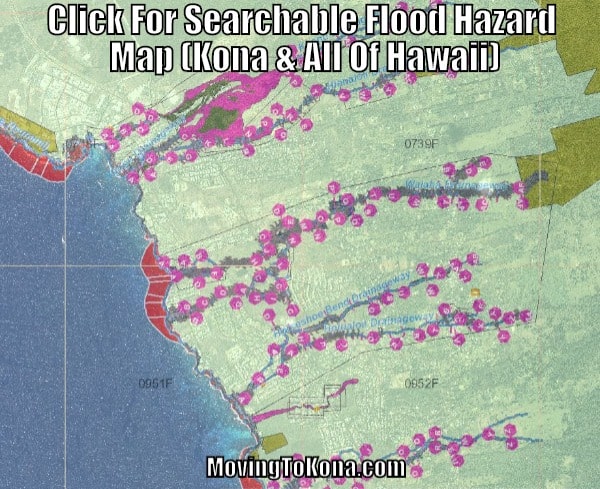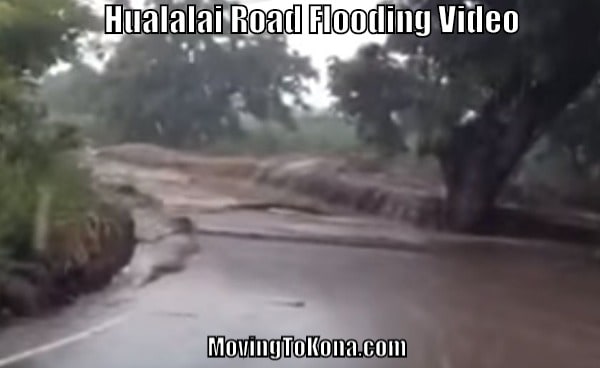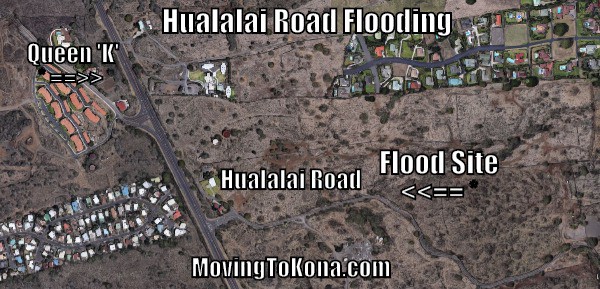Hualalai Road: Some roads just can’t handle rain…
Here is a video of Hualalai Road flooding from 2015 – Flash flooding over Hualalai Road
10/9/2018 KHON2 reports, Much of the Kona Coast on Hawaii Island under a flood advisory.
100 Gallons Of Water, 5 Gallon Hole… The rain flowed down the mountainside and attempted to flow along the culvert then under Hualalai Road. There was just too much rain and the drainage pipe under Hualalai Road could not pass all the rain waters so the rain just flowed over Hualalai Road.
Amazon Products
What Is The Difference Between Homeowners Insurance and Hurricane Insurance and Flood Insurance? Flood insurance, generally covers water coming into your home from off of your property. Hurricane insurance is for wind damage, not flooding, from a storm over 74 mph, ie a hurricane. Once winds drop below 74 mph, i.e., a tropical storm or less, any wind damage would most likely be covered under your homeowners’ insurance. Again, your property insurance, generally, covers wind and water damage from in other situations.
Is Your Hawai’i Property Located In A Flood Hazard? You can enter your exact address, anywhere in Hawaii, and the Hawai‘i Flood Hazard Assessment Tool will indicate where flood hazards exist near you. Use this Hawaii Flood Insurance Map tool to see if your residence or business is a flooding prone area.
 Click For Searchable Flood Hazard Map (Kona & All Of Hawaii)
Click For Searchable Flood Hazard Map (Kona & All Of Hawaii)
A mere six inches of fast-moving flood water can knock over an adult. And it only takes 12 to 18 inches of flowing water to carry away most vehicles including large SUVs. If you come to an area that is covered with water, you will likely not know the depth of the water or the condition of the ground under the water. This is especially true at night when your vision is more limited. Play it smart, play it safe. Whether driving or walking, any time you come to a flooded road, follow this simple advice: Turn Around Don’t Drown.
Here are safety tips to protect you during flooding:
- Always plan ahead and know the risks before flooding happens. Monitor NOAA’s All-Hazards Radio, or your favorite news source for vital weather related information before, during and even after a disaster.
- If flooding is expected or is occurring, get to higher ground FAST! Leave typical flood areas such as ditches, ravines, dips or low spots, and canyons.
- Avoid areas already flooded, especially if the water is flowing fast. Do not attempt to cross flowing streams. Turn Around Don’t Drown.
- NEVER drive through flooded roadways. Road beds may be washed out under flood waters. Turn Around Don’t Drown.
- Do not camp or park your vehicle along streams and washes, particularly during threatening conditions.
- Be especially cautious at night when it is harder to recognize flood dangers.
- Never cross any barriers that are put in place by local emergency officials. Not only is this dangerous, but many states and communities levy steep fines for people that ignore barricades or other road closure indications.
- Play it safe, Turn Around Don’t Drown.



